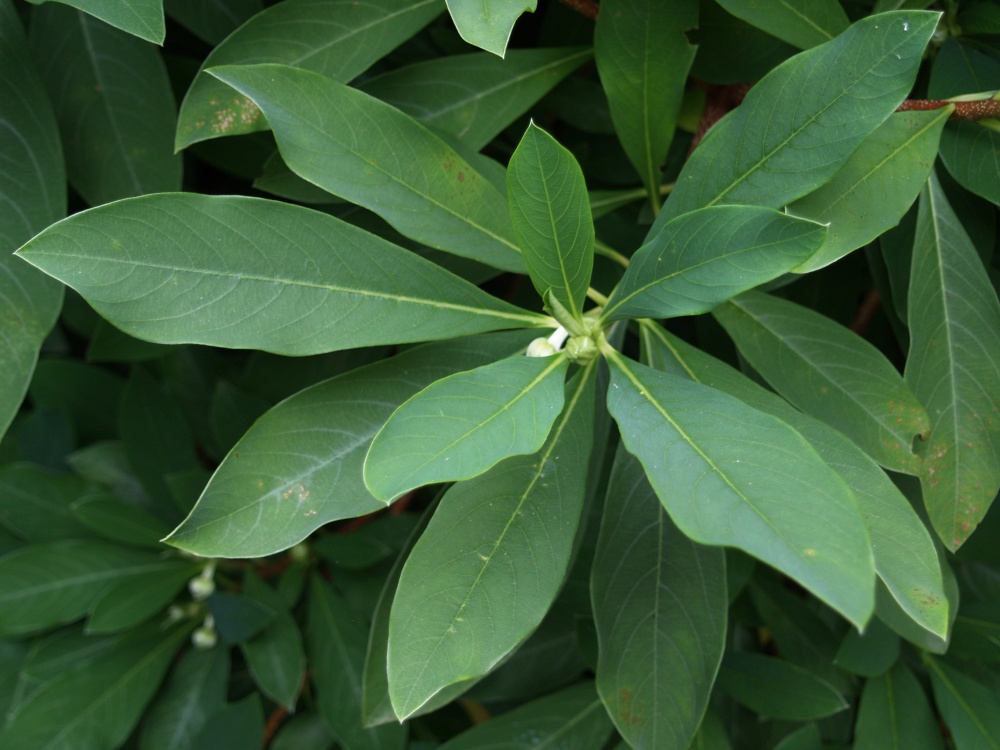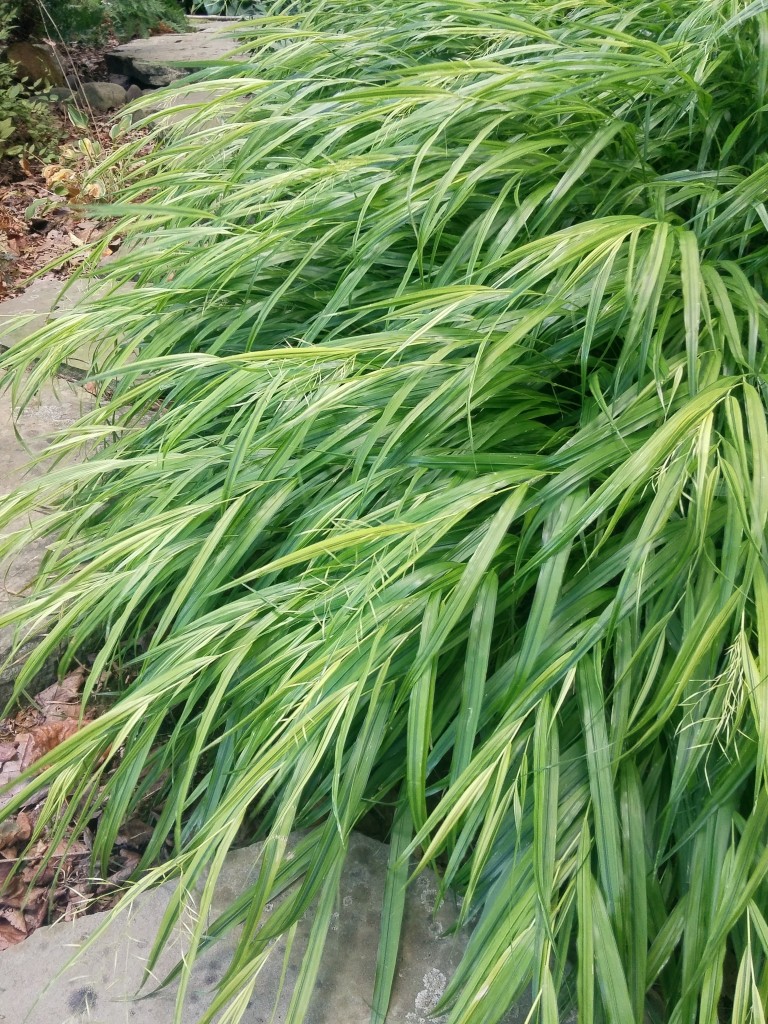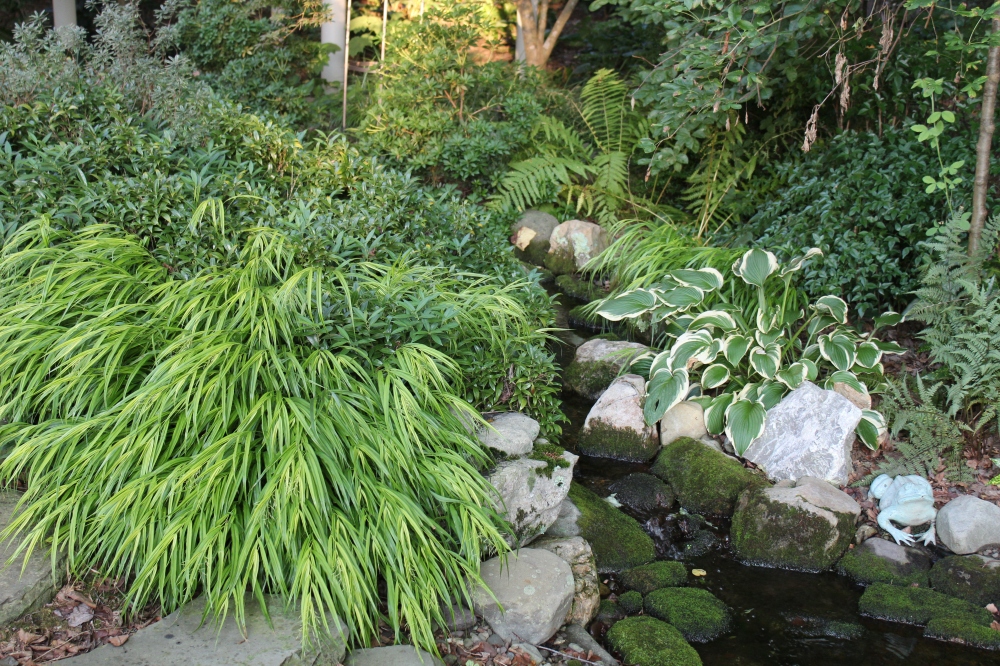Probably, the gardener is too quick to label a period in summer without substantial rainfall as drought, but there is no doubt that the past six weeks have been much drier than usual. Serviceberry (Amelanchier canadensis) and ‘Okame cherry (Prunus x incamp ‘Okame’) have reacted by dropping leaves.
While moisture loving River birches (Betula nigra) in the neighborhood are nearly bare, soil in the swampy rear of the garden remains damp, if not wet, so birches will remain leaf covered until frost. There is no need for worry about trees that have prematurely dropped leaves. Summer droughts are not unusual, and experience tells us that all will leaf normally in spring.
Some shallow rooted perennials in full sun show signs of stress from this extended period of heat and dryness, but on this early afternoon with a hint of autumn coolness, there are few areas of concern. In shaded parts of the garden, only tall Jack in the pulpits (Arisaema triphyllum, above) are wobbling as stems have lost rigidity.
I notice that, despite severe heat and lack of rainfall, paperbushes (Edgeworthia chrysantha) have grown vigorously through the summer. Several shrubs were damaged in freezes of winters two and three ago, and until now they have rebounded steadily, but slowly. While references state mature size as a compact four by four, paperbushes have grown to at least six feet tall, and ten feet or wider, just as they were prior to the freeze damage.
After this past mild winter, flowers were intact on paperbushes for the first time in three years, and I will hope for no more severe lows through future winters. Of course, the gardener knows that his requests count for nothing, but the consecutive winters were the coldest in twenty years, and it would not be so bad to wait twenty years for another.
Though I suspect them to be shallow rooted, the Japanese Forest grasses (Hakonechloa macra ‘Aureola’, above) show no ill effect from the recent weather. The yellow stripped leaves remain vibrant, and in shaded areas this slowly clumping grass works splendidly alongside broad leaves such as hostas as well any background of green.
The arching stems flutter in the slightest breeze beside the long, narrow stream edged by moss covered stones growing beside a mass of dark green sweetbox (Sarcococca humilis). Japanese Painted ferns, hostas, and ‘Carol Mackie’ daphne complete the scene that is a favorite in this garden. And, no matter how hot, or dry, this area does wonders to cool the summer weary disposition of the gardener.
Dave, your garden and plants look pretty darn good overall despite the endless heat and dry we are enduring in the southeast. I’m new to your blog;
is your garden fenced for deer? Do you have in ground irrigation?
This should serve as an example that anyone can successfully manage a garden, but on a larger scale. There is no fencing, no irrigation, no fertilizing, and as little maintenance as I can get away with.
I spray a repellent for deer since there are many dozens of hostas and other deer favorites, and I refuse to give in and plant resistant varieties. Over the years I’ve discovered a few plants that will not tolerate neglect, but most plants are much tougher than people suspect.
In two months the few storms that have passed this way have veered to one side or the other so that there’s been less than an inch of rain, and maybe less than half that amount. Only a few plants show any signs of stress, and that’s as much from the ninety eight and hundred degree days as the lack of rainfall.